
10 species you can spot at Aldinga’s intertidal and subtidal reefs
Located roughly 46 km south of Adelaide, Aldinga Reef is teeming with sea life to be discovered.
Aldinga Reef forms part of the Great Southern Reef, a reef system that fringes roughly 71,000 square km of the southern Australian coastline, from Western Australia down and all the way around to New South Wales.
The Great Southern Reef is a biodiversity hotspot and is home to many species that aren’t found anywhere else in the world – so there’s a lot to be seen and explored down at Aldinga.
And what’s even cooler is that Aldinga has both a subtidal and intertidal reef.
Subtidal is the area below the low tide mark that is always covered by water, and intertidal is the area that is covered at high tide and exposed at low tide.
This means Aldinga Reef can be explored from the water and the land, making it one of South Australia’s most accessible reefs.
Keen for a visit? Here are 10 funky species to look out for, from the water and the land:
From the water
Try to spot these 5 brightly coloured invertebrate species next time you snorkel Aldinga’s subtidal rocky reef:
1. Fire-brick star (Pentagonaster dubeni)
The fire-brick staris a species of starfish and is easily recognisable for its bright yellow, orange and red colouration.
Arm-length and plate-size of the fire-brick star varies, and they can be up to 15 cm at their widest point.
These guys live in rocky reefs and around soft sediment, up to 200 m below sea level, but are most often seen in shallow, sheltered bays.
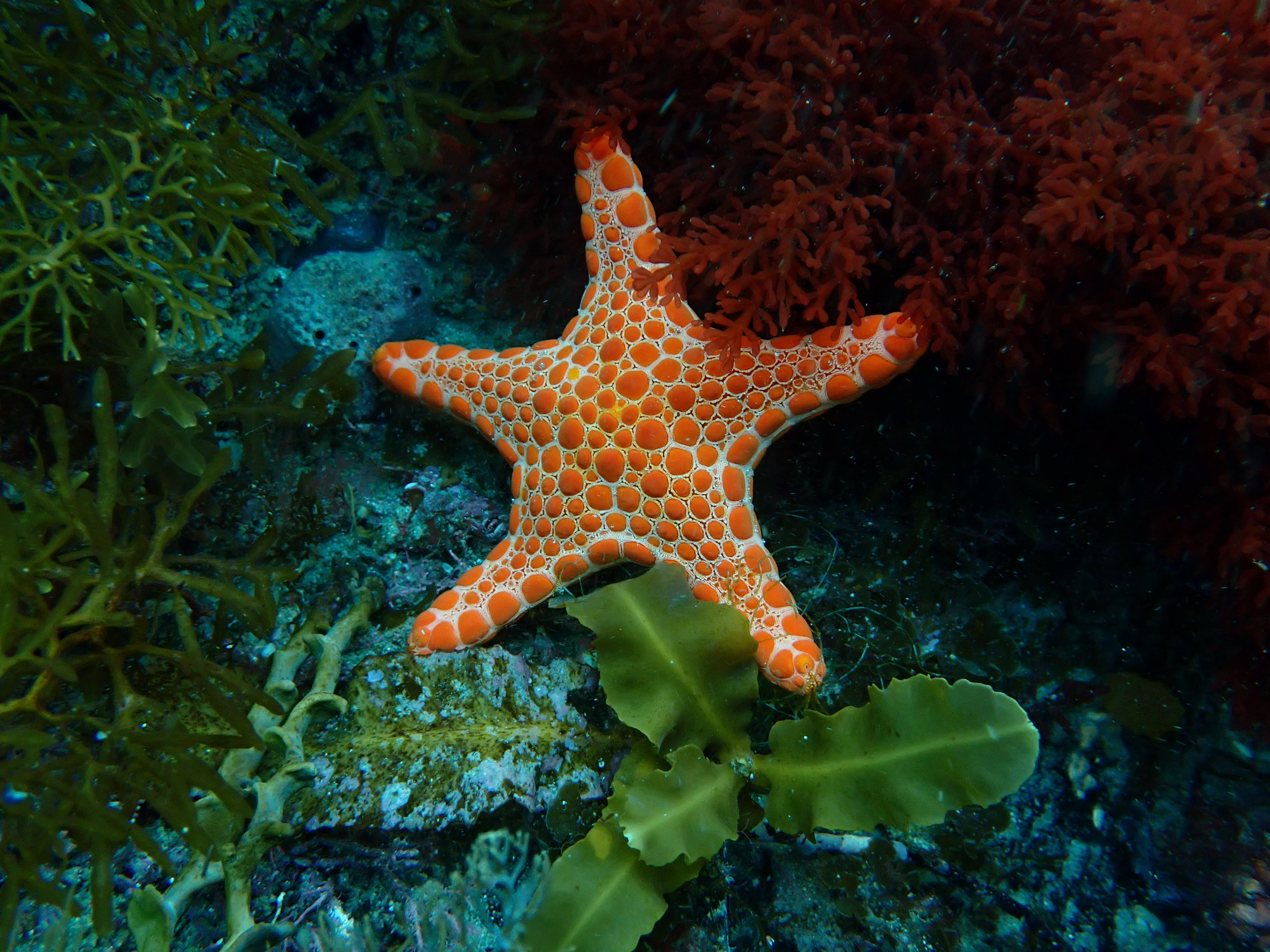
2. Western slate-pencil urchin (Phyllacanthus irregularis)
The western slate-pencil urchin is named for its thick blunt spines around the body that look a little like pencils.
These urchins live in rocky reefs and are found up to 20 m below sea level.
During the day the species use their spines to wedge themselves firmly into holes and crevices, and at night-time they come out to feed using the 5 sharp teeth on their underside.
These guys feed on encrusting invertebrates and scavenge dead and dying animals – tasty!
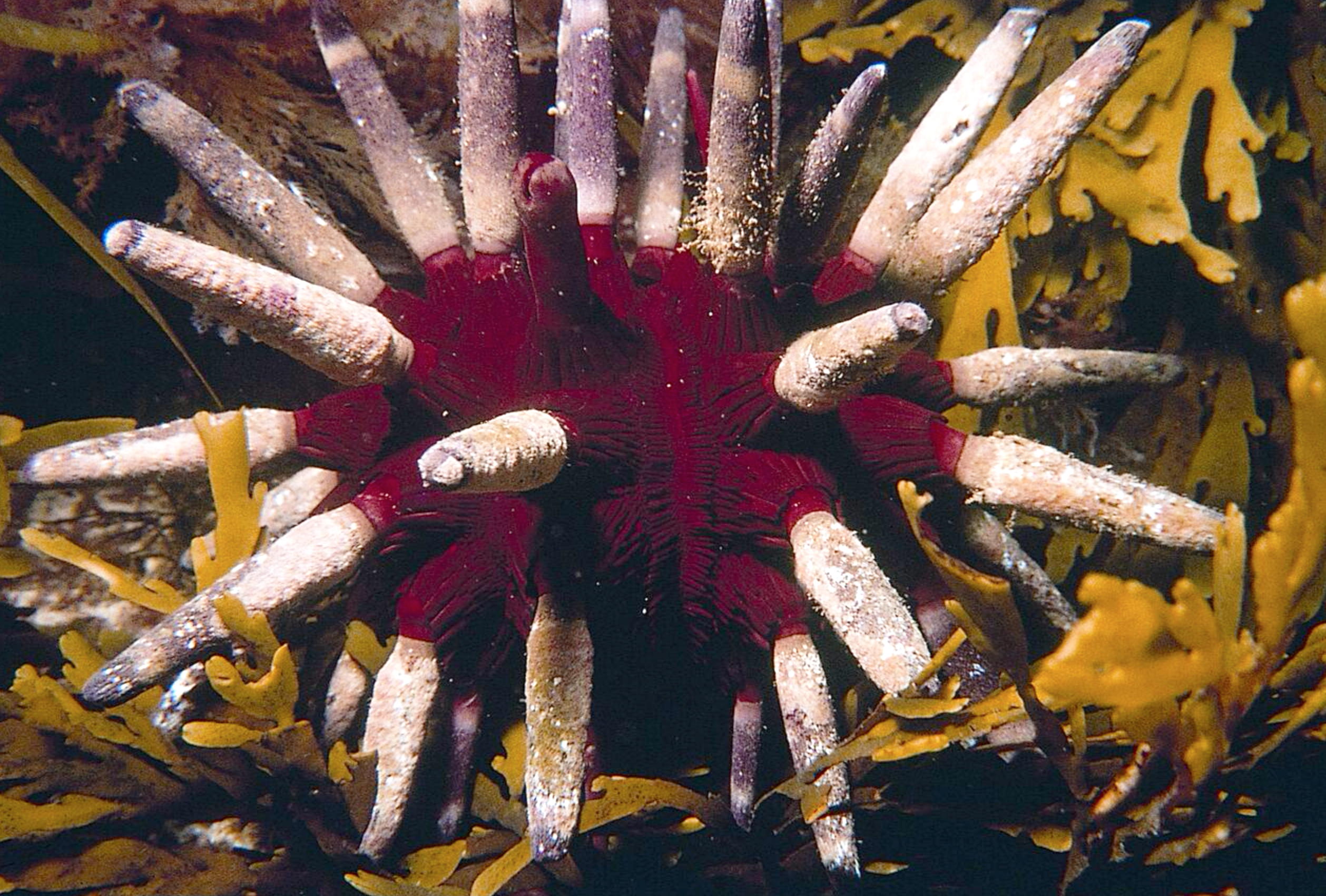
3. Orange feather star (Comanthus trichoptera)
The orange feather star is the largest and most commonly seen feather sea star on shallow reefs.
Individuals vary in colour, but they’re most commonly orange, brown, red or yellow.
If you spot one of these critters, you’re likely to just see their extended feeding arms as their bodies are usually hidden in a reef crevice.

4. Short tailed nudibranch (Ceratosoma brevicaudatum)
The short tailed nudibranch is one of many species of sea slug to be found in South Australia, and growing up to 15 cm long means it’s also one of the largest.
These critters are a vivid pink-orange colour with numerous red, white-edged spots over their bodies. You’ll find them in rocky reefs, up to 100 m deep.
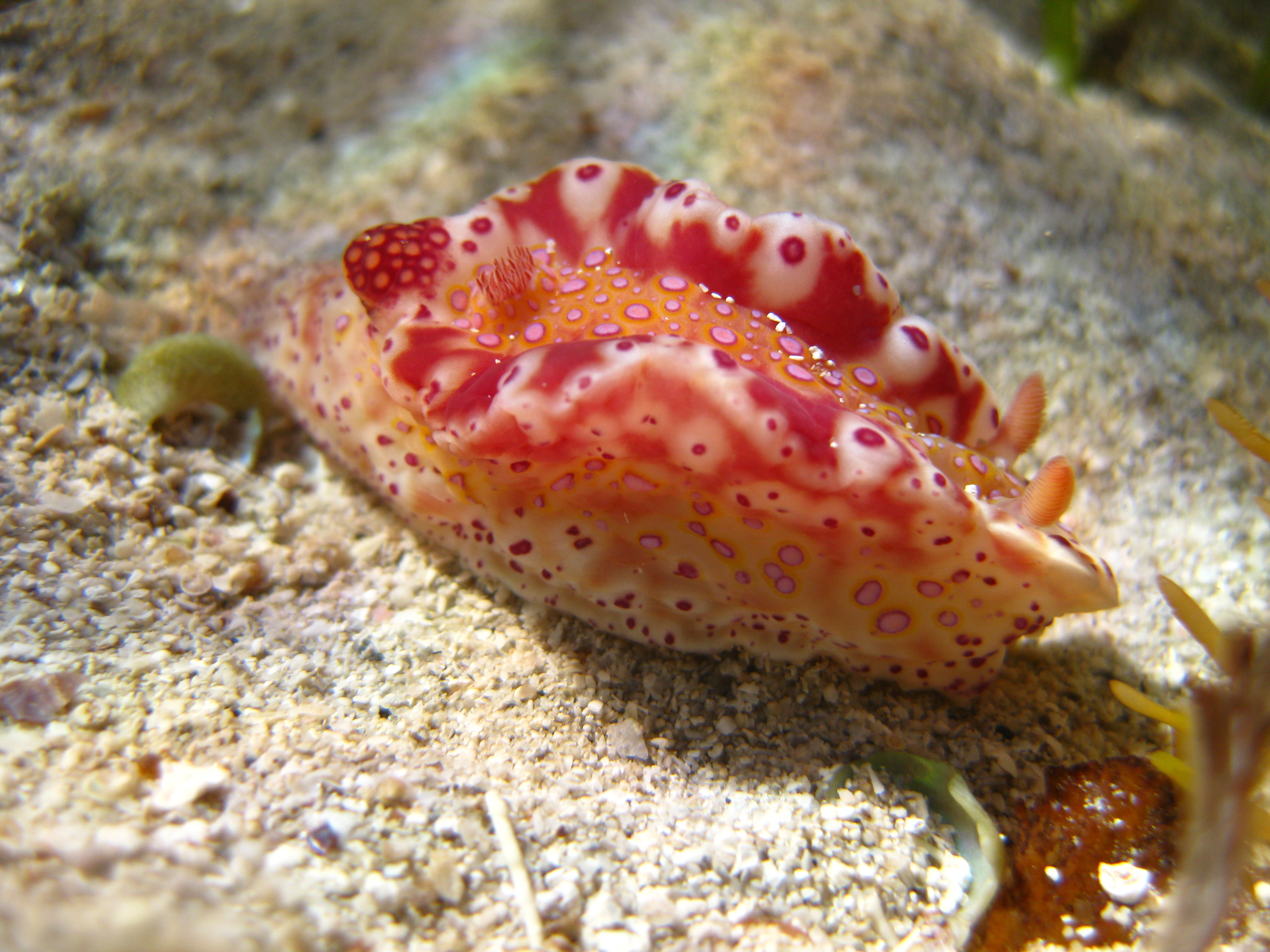
5. Giant Australian cuttlefish (Sepia apama)
Giant Australia cuttlefish are the most abundant local species of cuttlefish, and growing up to 60 cm long and weighing 5 kg they’re also the largest – and by a long shot at that!
The species is found amongst rocky reefs and seagrassand can rapidly change colour and pattern to blend in with its surroundings.
Giant cuttlefish breed in the winter, where they put on a mating display that is something to behold.
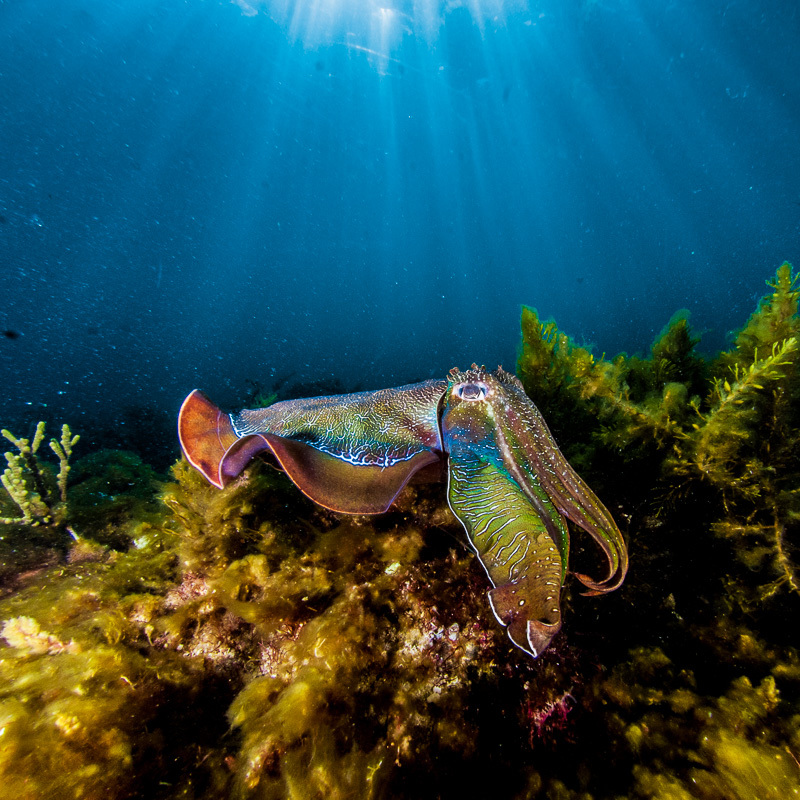
On land
If you want to explore the reef but aren’t keen on getting wet, worry not! An intertidal reef ramble at Aldinga Reef is the perfect way to explore. Here’s 5 species to look for:
1. Reef crab (Ozius truncates)
Reef crabs, also known as black finger crabs, are red-brown in colour, have dark claws and can be found on rocky shores under loose rocks and boulders.
Males are bigger than females, growing up to 6 cm, and have larger claws to match.
These guys have a diet of intertidal reef snails, like conniwinks and black nerites – did somebody say gourmet?
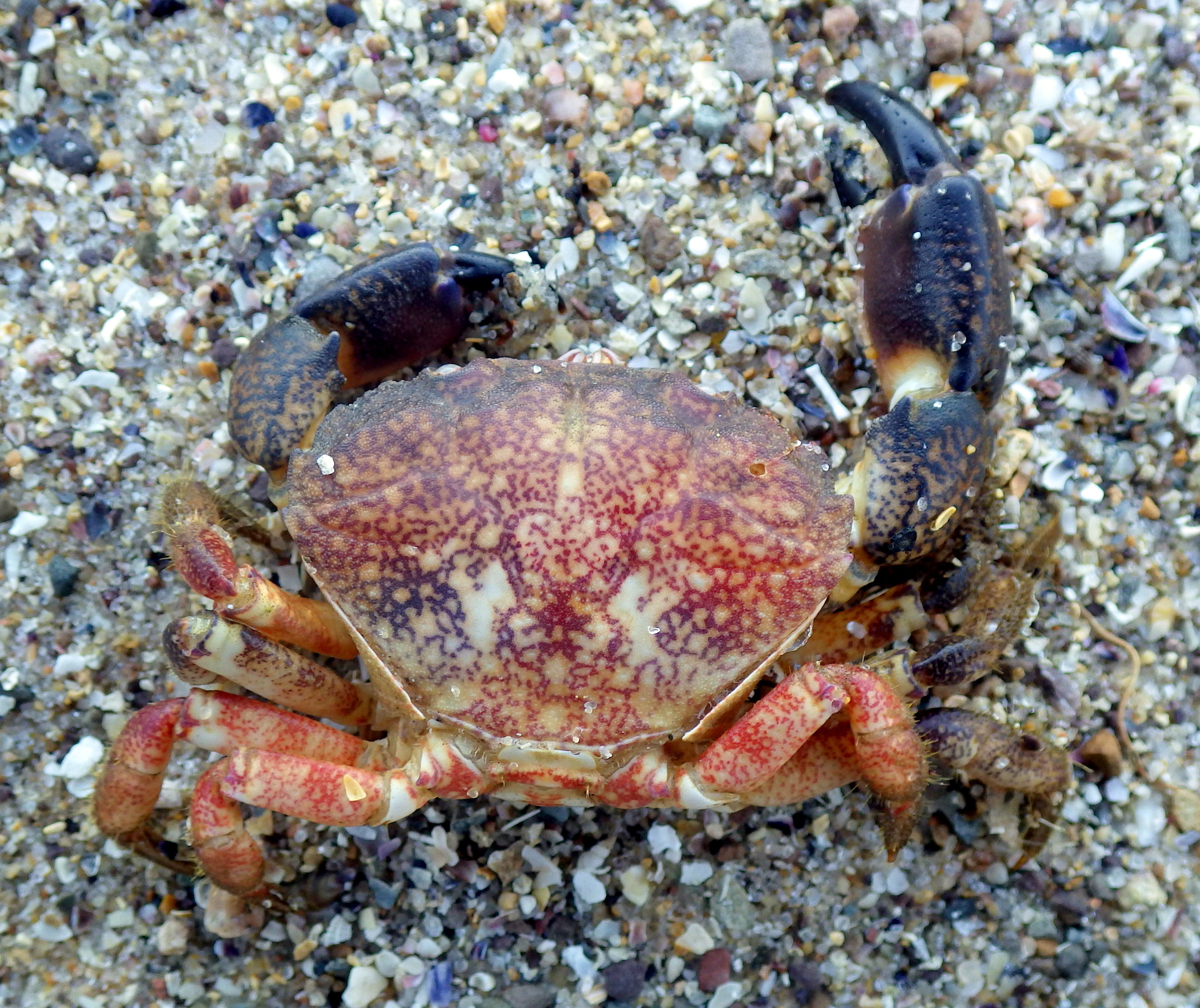
2. Dog whelk (Dicathais orbita)
Don’t be fooled by the name, dog whelk is a species of predatory sea snail and plays an important role on rock platforms, controlling population numbers of barnacles and mussels.
The shell shape of dog whelk varies with location, with lower ridges occurring in exposed habitats.
These critters grow up to 8 cm wide and are found in rocky reefs, up to 10 m deep.

3. Waratah anemone (Actinia tenebrosa)
The waratah anemone is a bright red-brown in colour and is named after the red waratah flower.
At low tide, when the body of the anemone is exposed to air, the tentacles close up, making it look like a dark red blob of jelly.
The waratah anemone is a live-bearing species, and baby anemones are fully formed when they come out the mouth of the parent.
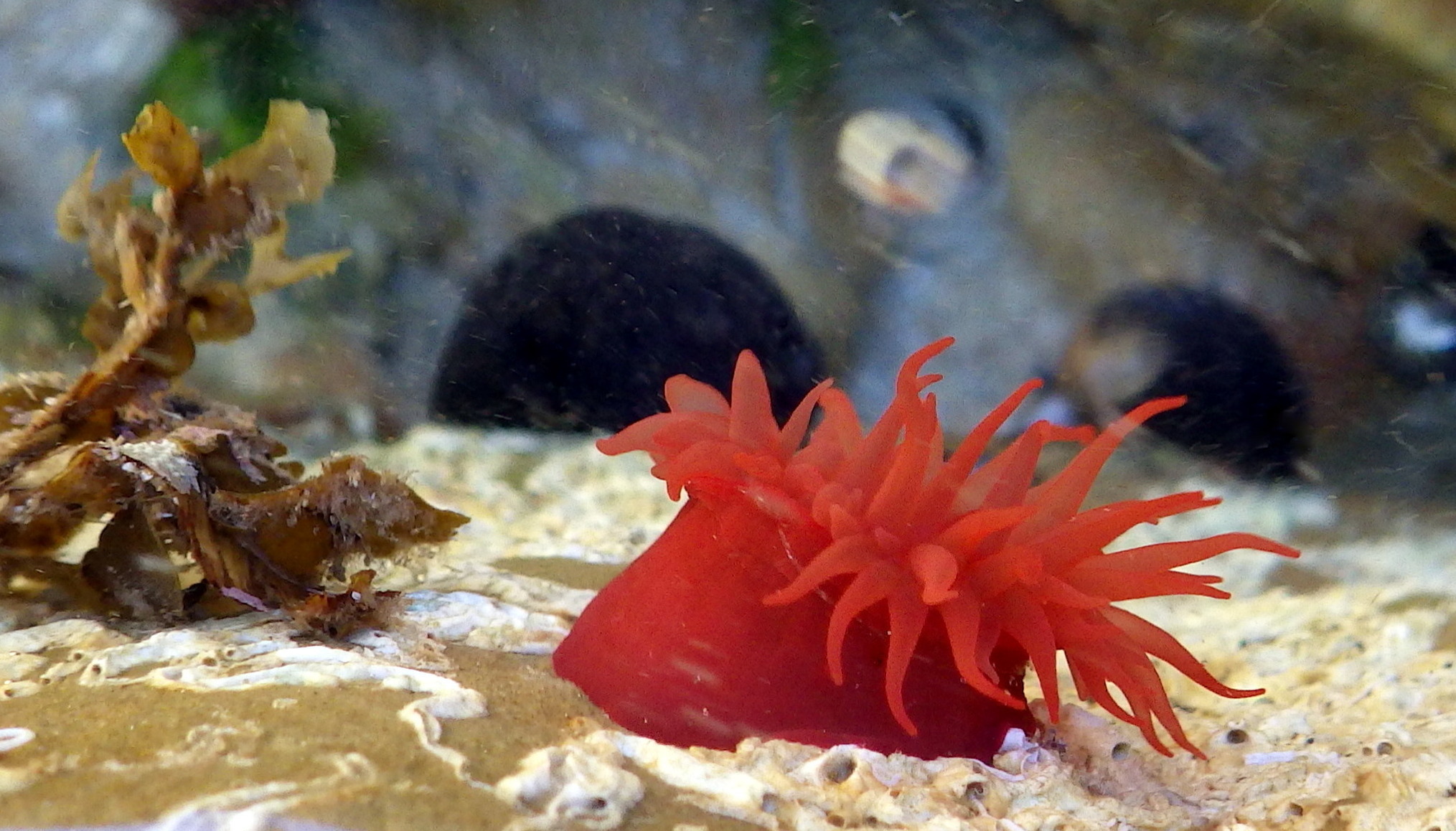
4. Intertidal tube worm (Galeolaria caespitosa)
The intertidal tube worm, also known as the Sydney coral worm, lives in hard, calcareous tubes that are about 3 cm long and are often aggregated on intertidal reefs and jetty piles.
These worms each have a crown of black tentacles that is extended at high tide to catch particles from the water.
The crown is covered by a lid, called an operculum, at low tide, to protect it from drying out.
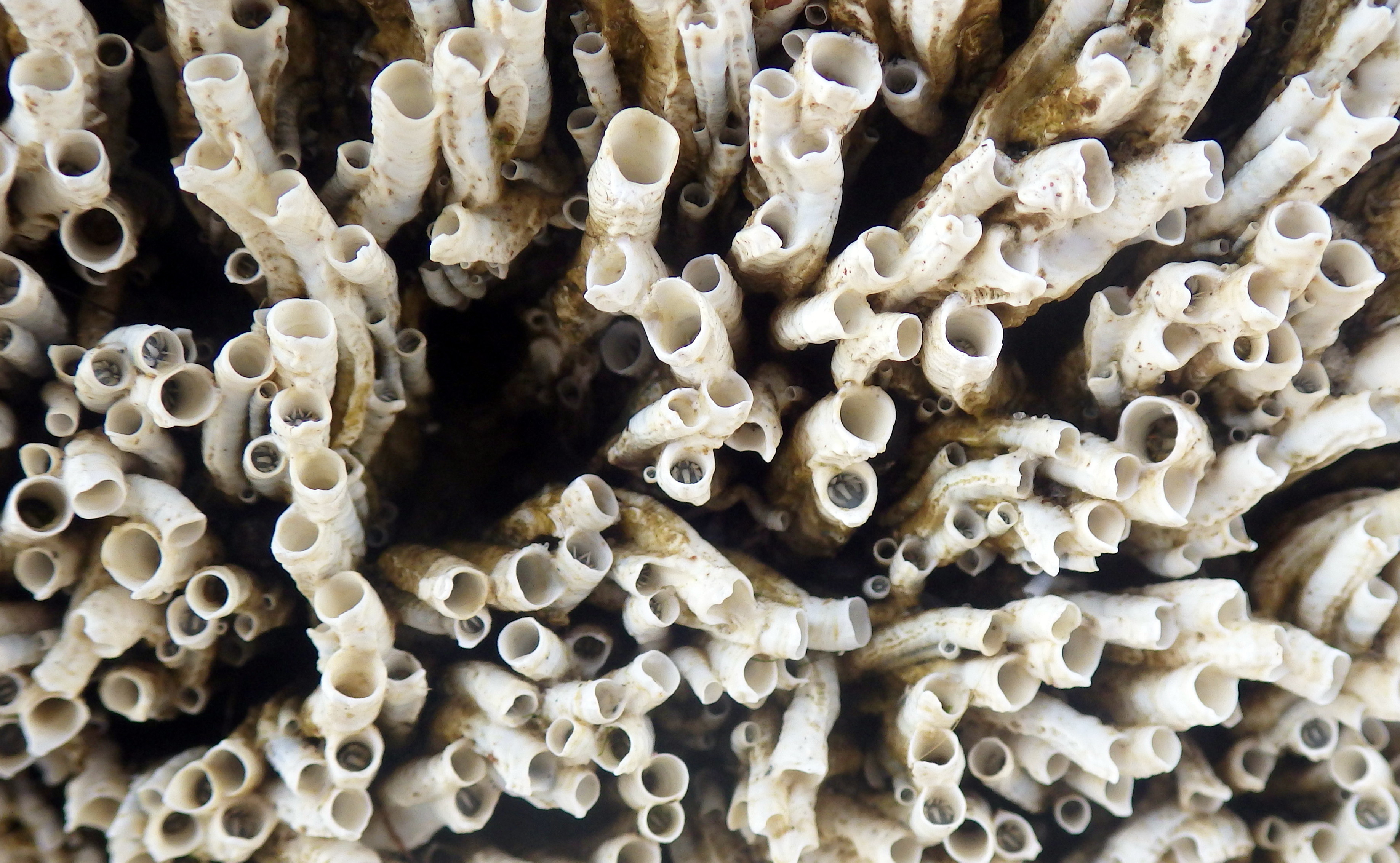
5. Variegated limpet (Cellana tramoserica)
There are many species of limpets in South Australia, and the variegated limpet is one of the more abundant.
The variegated limpet is golden brown with darker stripes, and grows to about 6 cm.
Found on intertidal reefs, it grazes on algae (which in turn helps to control algae).
After moving around to feed, some of these limpets return to the same place on their ‘home’ rock, by sensing the chemicals in their own slime trails.
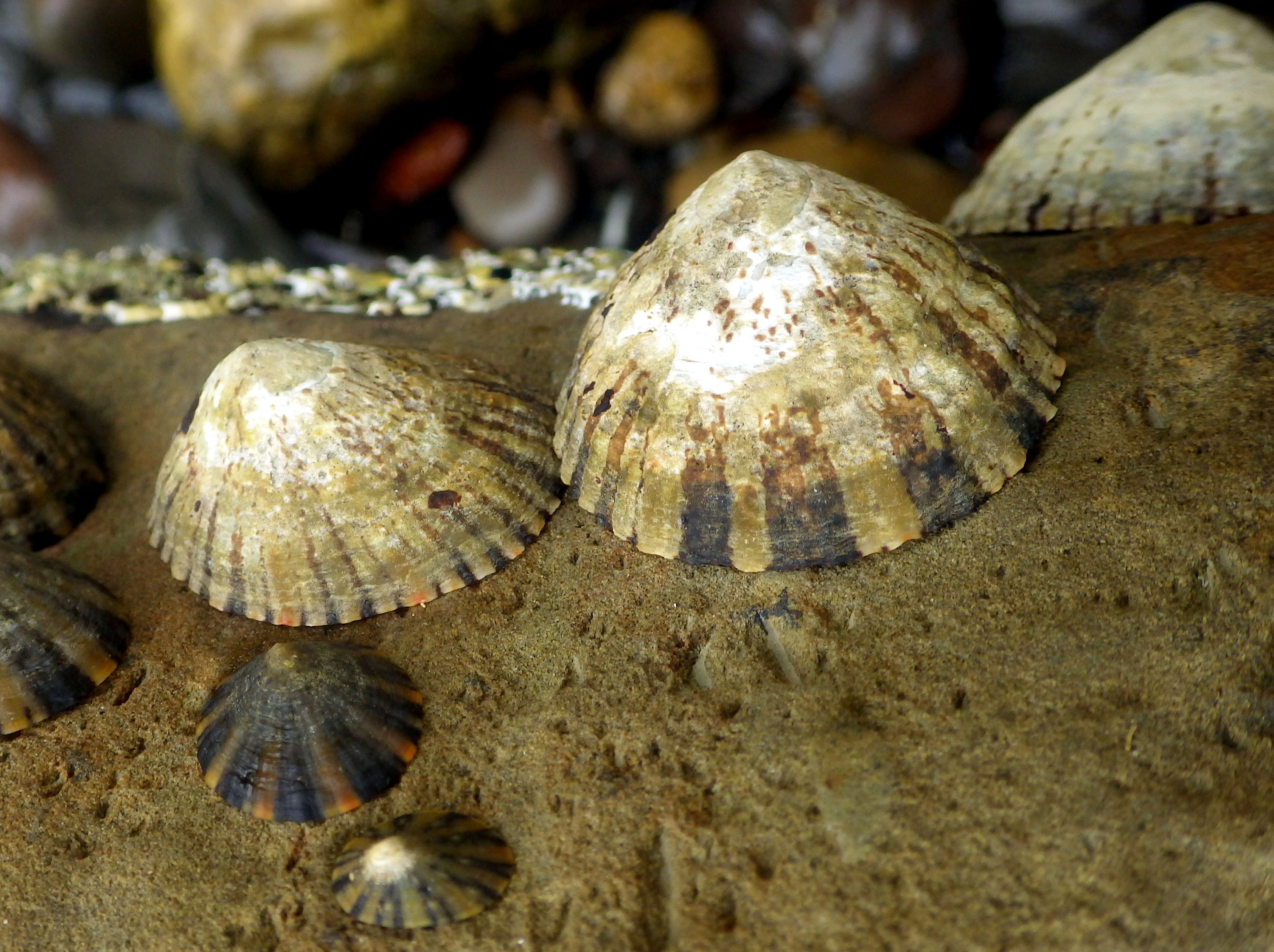
Top tips for a great trip
- Always check the weather before planning a snorkelling trip
- Low tides of 0.3 m or less are best for intertidal reef rambles, because you’ll be able to access the far edge of the intertidal reef and see more marine life
- Always make sure someone knows where you’re going, and what time you’ll be back
- Look, but don’t touch – Aldinga Reef is part of a sanctuary zone, which means it’s fully protected, so you can’t take anything home with you
Snorkelling
If you’re an experienced snorkeler, head to the edge of the reef during low tide when sea conditions are flat.
If you don’t have much experience snorkelling, try exploring the calm tidal pools of the southern part of the reef – access is between Seaview Road and Aldinga Beach Road.
If you would like to discover the amazing marine life of South Australia’s subtidal reefs but don’t have the experience or confidence to go snorkelling, then check out Experiencing Marine Sanctuaries’ website for information on their regular guided group snorkelling tours.
Want more? Check out National Parks and Wildlife Service’s beachcombingand snorkeler’sguides to find out more about the plants and animals you might see on the beach or while snorkelling in our marine parks.